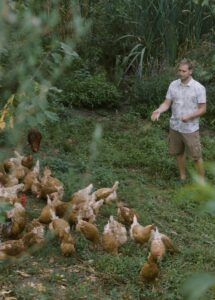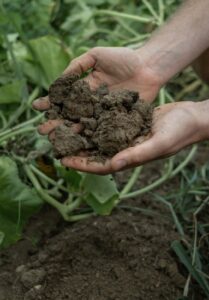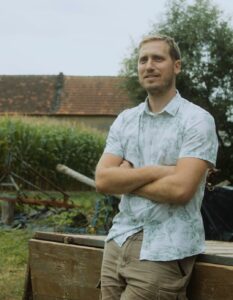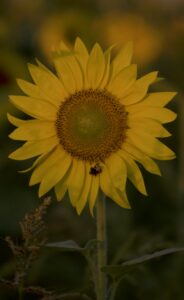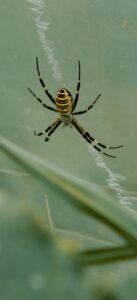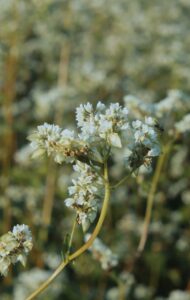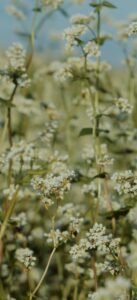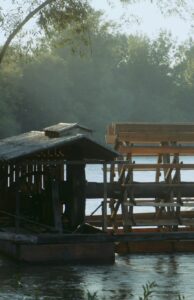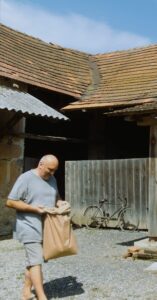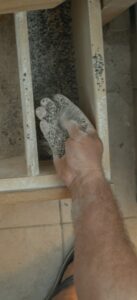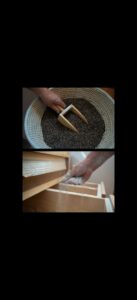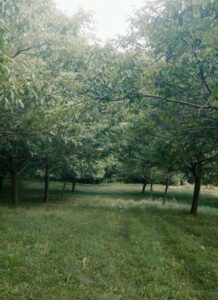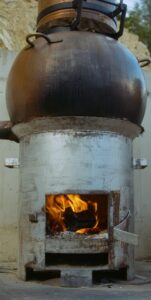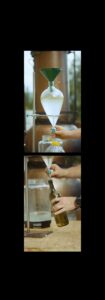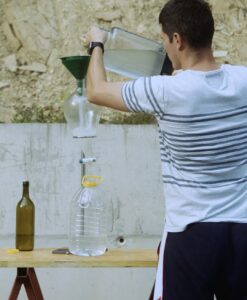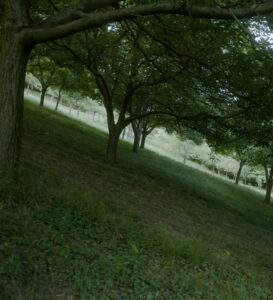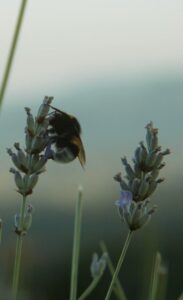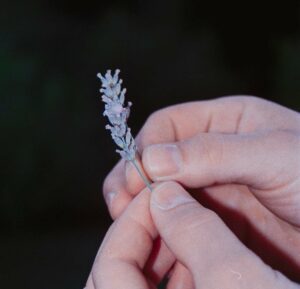



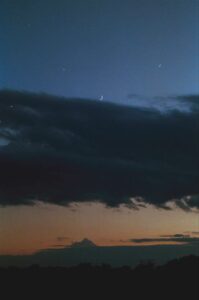
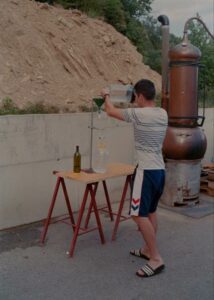
The
creatures
that
make
our
life
possible
...
Please enable sound
Episode 3
From Sunflowers and Pumpkins to Lavender and Moss
From Sunflowers and Pumpkins to Lavender and Moss
0% Loading...
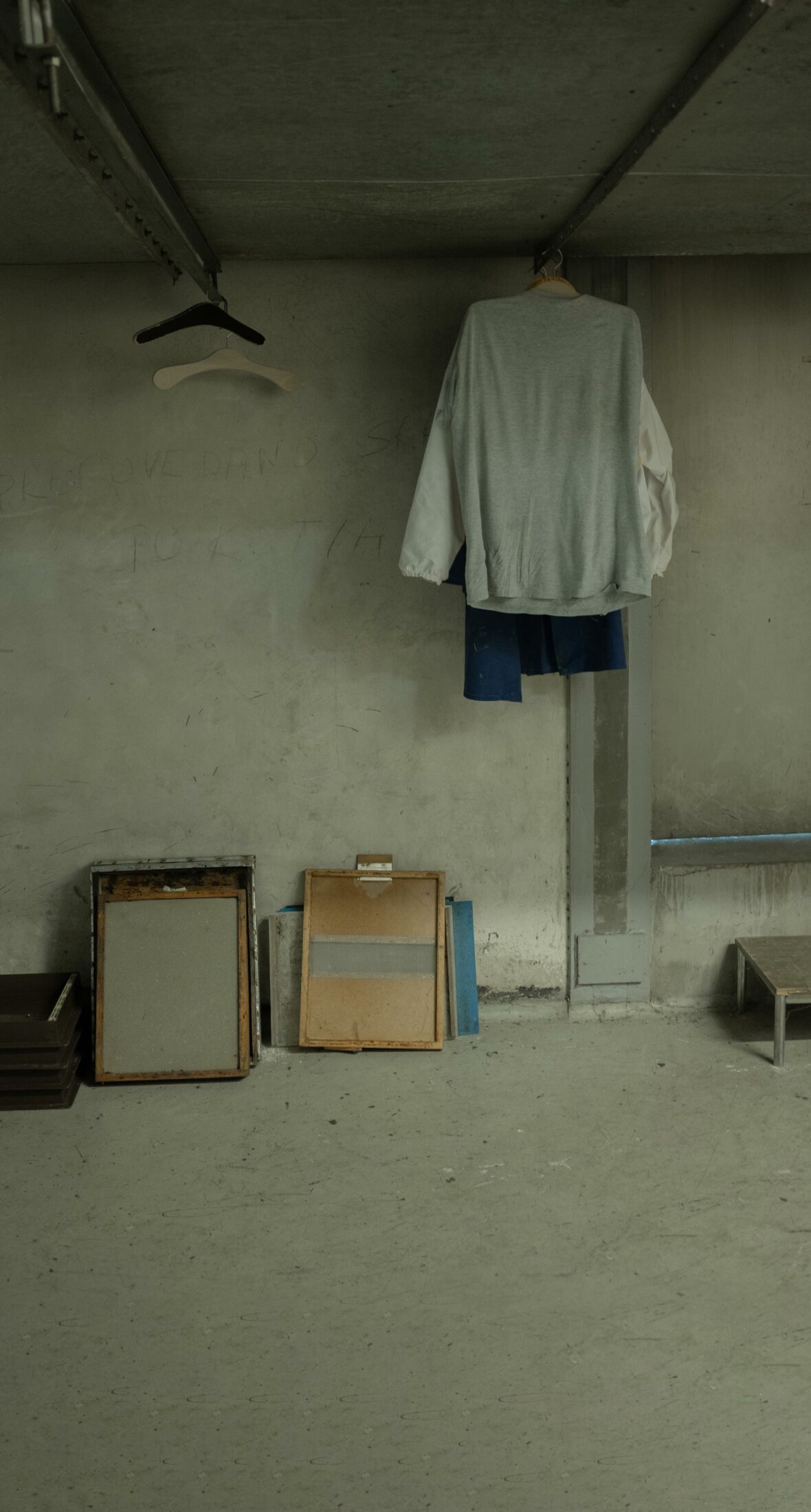
The Pollinators
of Slovenia
An interactive documentary
by Studio Airport
by Studio Airport
2023
About
Amid Slovenia’s thick forests of beech, fir, and maple, rolling agricultural land, and clear-running rivers there run ancient threads of relationship—between humans, pollinators, and the Earth—that still hum with life. In this interactive documentary, we travel deep into Slovenia’s landscape to learn how beekeepers and farmers are continuing to nurture this relationship in the face of climate change and habitat loss, finding new ways to nourish the vital creatures who in turn nourish us and the land.
Produced by
Emergence Magazine
Studio Airport
Director
Bram Broerse
Art Director
Maurits Wouters
Executive Producer
Emmanuel Vaughan-Lee
Writers
Anže Petelinšek
Bram Broerse
Emmanuel Vaughan-Lee
Cinematographers
Luuk de Kok
Mischa van Schajik
Photographers
Maurits Wouters
Carsten Pölking
Film Editor
Bram Broerse
Sound Designer & Music
Julian Tjon Sack Kie
Researcher
Anže Petelinšek
Graphic Designers
Anže Petelinšek
Bram Broerse
Sam Reith
Code by
September Digital
Developers
Hidde Meulenbeek
Wouter den Boer
Jan-Maarten Schot
Drone Operator
Mischa van Schajik
Color Grader
Maurits Wouters
Motion Designers
Bram Broerse
Hidde Meulenbeek
Narration Writer
Rachel Broomhead
Copy Editors
Michelle Moore
Lucy Wormald
Translator
Anže Petelinšek
Narrator
Tisa N. Herlec
Interviewees
Matjaž Novak
Stefan Novak
Roman Košale
Dr. Danilo Bevk
Manca Omerzu
Franc Petrovčič
Darja Jenko
Črt Butul
Interviewers
Anže Petelinšek
Bram Broerse
Cellist
Laurence Gaudreau
Voice Over Recording
SonicPicnic, Robin Schaefer
Additional Camera Operator
Ziga Krajnc
Special Thanks to
Beekeep Museum, Čebelarstvo Tigeli
Čebelarstvo Košale
Domač Butul
Dr. Danilo Bevk
Eko Prekmurc
Janšev Čebelnjak
Kmetija Omerzu
Landscape Park Tivoli
Ljubljana Botanic Garden
Slovenia Forest Service
Urban Beekeepers Association
13:29
In this episode of “Pollinators of Slovenia,”
we turn to the soil and discover
the world of regenerative farming.
From a hundred-year-old farm in Prekmurje,
to a family orchard in the forested
hills of Kozjanski Park,
we discover how small-scale farms
are welcoming pollinators back to the land.
Walk with us into fields of lavender,
sunflowers, and buckwheat
and listen to the sound
of a world coming alive.
I’m Matjaž Novak,
and I’m living in Puconci,
where we have a farm
and raise chickens, maize, wheat,
tomatoes, and things to grow, to sell,
and to eat good food.
The farm, as you see,
is quite old.
It was started more than
a hundred years ago by my grandfather,
and before that it was his grandfather’s,
and so on.
It’s the tradition in the whole Prekmurje region.
And then the farm was empty for fifteen years.
And now we started like five to ten
years ago again with farming.
So we have maize, pumpkins, wheat.
And also vegetables for us.
Everyday starts with
the sound of the roosters.
We let them out to the grass,
and then we give them food.
And then we go to the garden
just to see if the veggies need water.
And then it depends on the season.
We don’t use any chemical fertilizers or pesticides.
So, everything must be
done by hand or small tractors.
As you see, there is much
more grass in the fields,
because it’s not possible to collect them all.
So, it’s a lot of work by hand.
This year we tried to combine two high plants,
sunflowers and corn,
just to attract the bees and bumblebees,
and to make the view of the
cornfields more beautiful
than if it was just corn.
It’s also to attract pollinators.
Because, as you see, in our region
there aren’t a lot of sunflower fields.
I think it’s a good idea to
give them food
and also to make a place
for them to stay
and multiply.
What are pollinators?
The creatures that make our life possible.
So they pollinate
some plants, trees,
to give us the fruit and the grains,
food on the table
in a direct way.
And also, they are nice.
Each one of us can plant
some species of trees,
some plants that can
attract and give food
for these pollinators.
And also, we farmers
should think about our farming tradition—
that we can mix in a little bit more of
the plants that can attract pollinators.
This is one community.
For example,
the insects that are living here,
and also the mammals that are living
on these kinds of fields,
they are in high numbers.
So this whole process of mixing nutrients
and making the soils more soft
is much better than in
the classical fields.
In this episode of ‘Pollinators of Slovenia’.
We turn to the soil and discover
the world of regenerative farming.
From a hundred-year-old farm in Prekmurje,
to a family orchard in the forested
hills of Kozjanski Park.
We discover how small scale farms are
welcoming pollinators back to the land.
Walk with us into fields of lavender,
sunflowers and buckwheat.
And listen to the sound of
a world coming alive...
I’m Matjaž Novak, and I’m living in Puconci.
Where we have a farm.
And raise chickens, and maize, wheats,
tomatoes, and things to grow, to sell.
And to eat good food.
The farm, as you can see.
It’s quite old.
The farm is more than 100 years ago
founded by my grandfather.
And before it was from his grandfather,
and so on.
It’s the tradition in the whole Prekmurje region.
And then the farm was for 15 year empty.
And now we started like five to ten
years ago with farming.
So we have maize, pumpkins, wheat.
And also vegetables for ourselves.
Everyday starts with
the sound of the roosters
We leave them out to the grass.
And then we give them food.
And then we go to the garden.
Just to see if the veggies need water.
And then it depends on the season.
We don’t use any chemical fertilizers or pesticides.
As you see, everything must be
done by hand or small tractors.
As you see, there is a much
more grass in the fields,
because it’s not possible to collect them all.
So, It’s a lot of work by hand.
This year we tried to combine two high plants.
Sunflowers and corn.
Just to attract the bees and bumblebees.
To make the view of this
cornfields more attractive.
Than if it’s just corn.
It’s also to attract pollinators.
Because as you see, in our region
there are not a lot of sunflower fields.
I think it’s a good idea to
give them the food.
And also to make a place
for them to stay.
And... Multiply.
What are pollinators?
The creatures that make our life possible.
So... that they pollinate
some plants, trees.
To give us the fruit and the grains.
So, food on the table.
In a direct way.
...and also, they are nice.
Each one of us can plant
some spicies of trees.
Some plants that can
atract and give food.
For these pollinators.
And also, we farmers...
Should think about our farming tradition.
That you can mix a little bit more with
the plants that can attract pollinators.
This is one community.
For example:
The insects that are living here,
and also the mammals that are
living on these kind of fields
They are in high numbers.
So this whole process of mixing nutrients.
And making the soils more soft.
Is much better than in
the classical fields.
Once an important part of the national diet,
buckwheat is taking back terrain in Slovenia.
As well as challenging the monocultures
of corn and wheat,
this ancient grain is providing
welcome sustenance for pollinators.
So, buckwheat is a really
easy crop to cultivate
because you just plant the seeds in the field
and then you just leave
it for a couple of months.
And then you collect the grains.
For example, if you want to make a flour,
then you just grind the grains.
Or if you want to make this dish,
buckwheat porridge,
then you use a different procedure
in which the wheat gets cooked with steam.
You can make quite a good risotto with this.
In Slovenia it’s very popular
to make buckwheat porridge
with porcini, which is a type of fungi
that grows here in the north, almost in
every [Slovenian] natural forest.
You can find this kind of fungi,
and it’s delicious.
And if you go to the
mountains or the hills,
they’re making this kind of porridge
with some pig grease,
and you eat it with a sausage.
And also pancakes—
you can mix wheat with buckwheat,
and you get delicious pancakes.
Once an important part of the national diet,
buckwheat is taking back terrain in Slovenia.
As well as challenging the monocultures
of corn and wheat.
This ancient grain is providing welcome
sustenance for pollinators.
So, the buckwheat is a really
easy crop to cultivate.
Because you just plant the seeds in the field.
And then you just leave
it for a couple of months...
and than you collect the grains.
For example, if you want to make flour,
Then you just grain the grains.
Or if you want to make this dish,
Buckwheat Porridge
Then you use a different procedure
in which the wheat gets cooked with steam.
You can make quite a good risotto with this.
In Slovenia it’s very populair
to make buckwheat porridge
with porcini, which is a type of funghi.
That is grows here in the North but in almost
each part of the (Slovenian) natural forest.
You can find this kind of funghi,
and it’s delicious.
And if you go to the
mountains or the hills
They’re making, this kind of porridge,
with some pig grease.
And you eat it with a sausage.
And also pancakes.
You can mix wheat with buckwheat,
and you get delicious pancakes.
My name is Manca Omerzu,
and I work on a family farm.
We have an orchard of apple meadow,
and a walnut orchard, and lavender.
And we keep bees.
We have different products.
Everything is produced on our ecofarm.
We are producing essential oil of lavender.
We harvest only the flowers,
not the green part,
only the purple part of lavender.
Then we make a fire
and put flowers in the distiller.
The steam goes through the flowers.
In the end we get essential oil on the top
and there is a tonic
that we also use—
not just the essential oils but also the tonic.
We use less pesticides,
because we really care for our health
and for the nature.
And everything that is produced here
on our farm we eat as well.
We really care for the nature.
The landscape means a lot to me
and my whole family.
We need to make sure that our children
will see what treasure we have here.
Because nature here is really pure.
We are in the Kozjanski Park—this is a region here in Slovenia.
Our orchards are typical for this part of Slovenia,
and we want our children to
eventually go on with our work.
What is a bee to us?
A bee for us is life.
Because without bees we would have
less fruit and less flowers.
They’re really important.
Because without them, there is no us.
We have to understand this.
We have a beehive.
And also wild pollinators are important to us
because they can fly when it’s raining,
when it’s windy, when it’s colder,
early in the morning, late in the evening,
when the bees that we have in the hive can’t.
We’re building wooden
houses for wild pollinators,
and we don’t mow our grass so often,
so they have food for themselves.
The important thing for bees
and wild pollinators is also water.
We go into the forest and pick up moss
and water it three times a day
so that they have water,
because water is really important for them.
My whole family, my parents, my husband—
we are in this together.
Because we need wild pollinators.
We need them.
They don’t need us
but we need them.
We’re looking in the same direction.
We’re building this farm together.
We’re planting lavender for them,
for wild pollinators,
so they have food,
so they can reproduce,
and so there are a lot more
of them every year.
My name is Manca Omerzu,
and I work on a family farm.
We have an orchard of apple meadow.
And a walnut orchard and lavender fields,
and we keep bees.
We have different products.
Everything is produced on our eco farm.
We are producing essential oil of lavender.
We harvest only the flowers,
not the green part,
only the purple part of lavender.
Then we make a fire.
And put flowers in the destilator.
The steam goes through the flowers.
In the end we get essential oil... on the top
And on the bottom then there
is a tonic that we also use.
Not just the essential oils but also the tonic.
We use less pesticides,
because we really care for our health,
and for the nature.
And everything that is produced here
on our farm we eat as well.
We really care for the nature.
The landscape means a lot
to me and my whole family.
We need to make sure that our children
will see what treasure we have here.
Because nature here is really pure.
We are in the Kozjanski Park,
this is a region here in Slovenia.
Our orchards are typical for this part of Slovenia
and we want our children to
eventually go on with our work.
What is a bee to us?
A bee for us is life.
Because without bees we would have
less fruit and less flowers.
They’re really important.
Because without them, there is no us.
We have to understand this.
We have a beehive.
And also wild pollinators are important to us.
Because they can fly when it’s raining,
when it’s windy, when it’s colder.
Early in the morning, late in the evening.
While bees that we have in the hive can’t.
We’re building wooden
houses for wild pollinators.
And we don’t mow our grass so often.
So they have food for themselves.
The important thing for bees
and wild pollinators is also water.
We go into the forest and pick up moss.
And we water it... three times a day.
So that they have water.
Because water is really important for them.
My whole family, my parents, my husband,
we are in this together.
Because we need wild pollinators.
We need them.
They don’t need us
but we need them.
We’re looking in the same direction.
We’re building this farm together.
We’re planting lavender for them,
for wild pollinators,
So they have food.
So they can reproduce...
and that there are a lot more
of them every year.
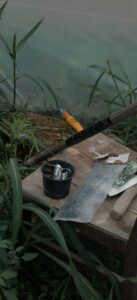
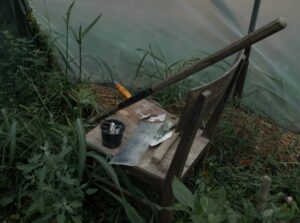
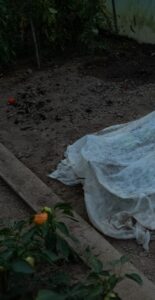
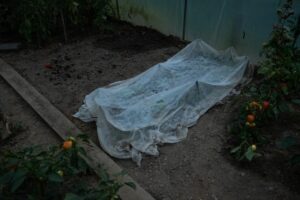
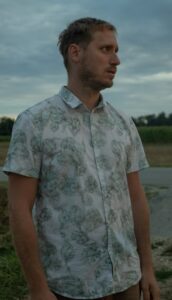
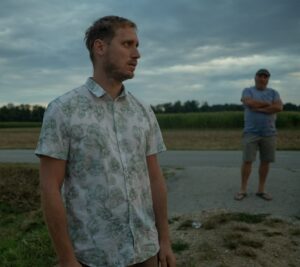
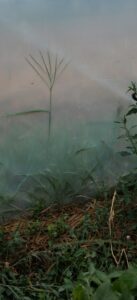
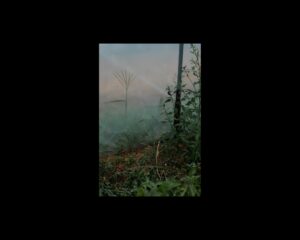
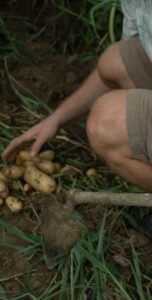
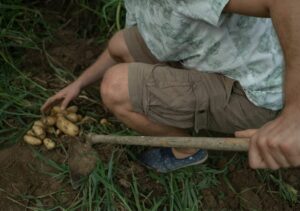

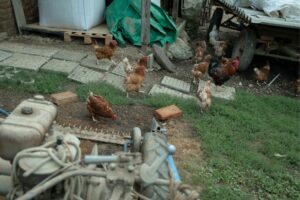
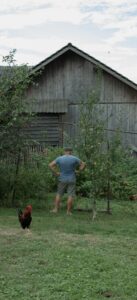
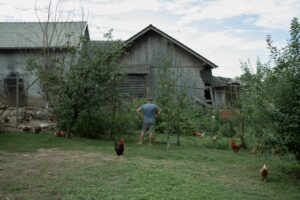

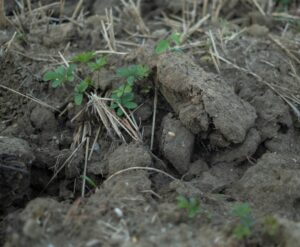
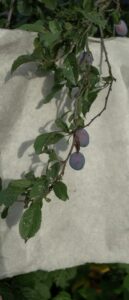
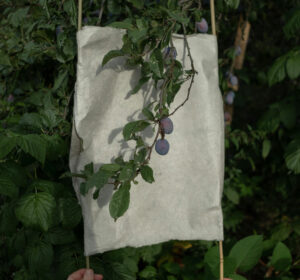
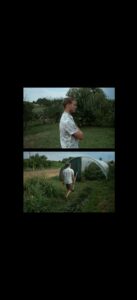
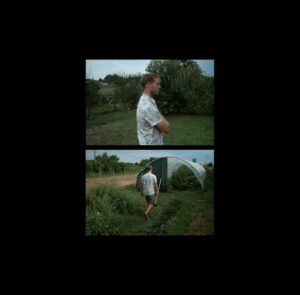
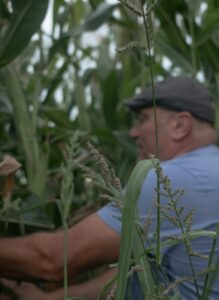
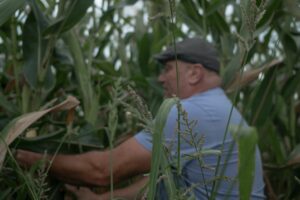
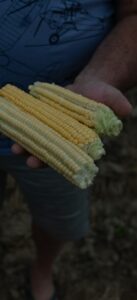
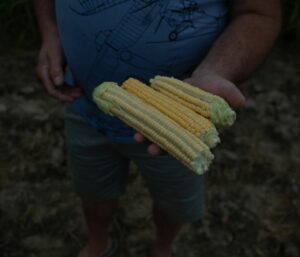
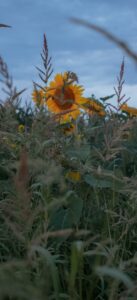

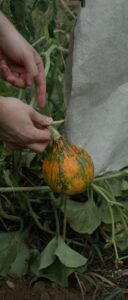
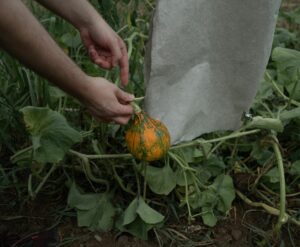

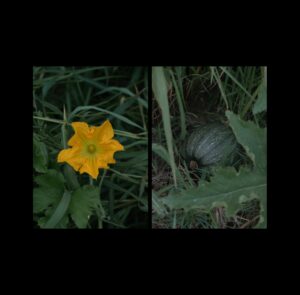
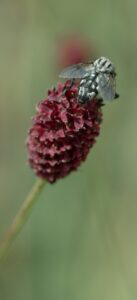
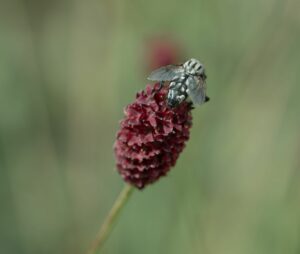



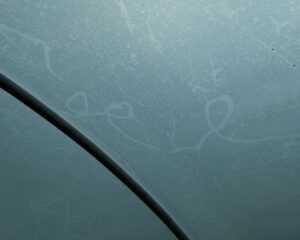
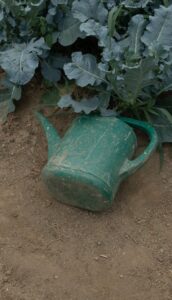
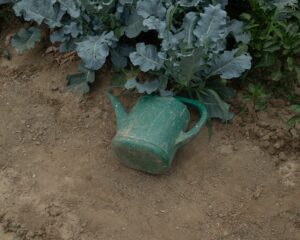

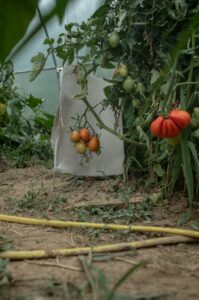
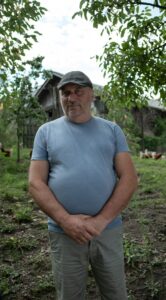

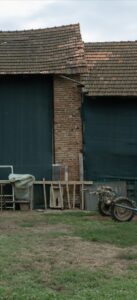
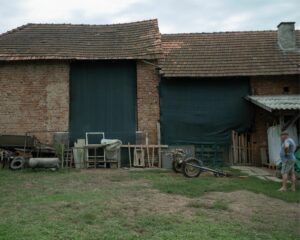
EP.03
From Sunflowers and Pumpkins to Lavender and Moss
Episode 3
Part (1/3)
It All Starts with the Soil
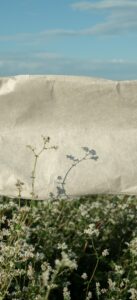
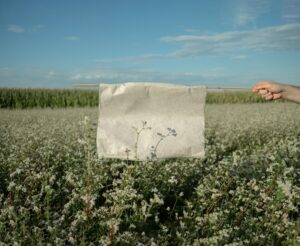
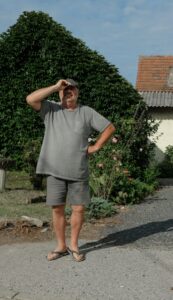
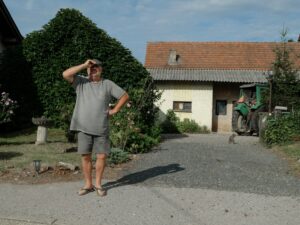
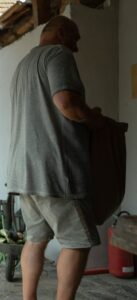
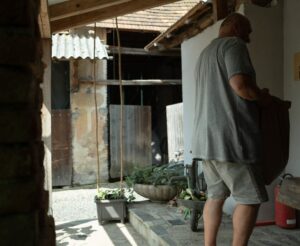
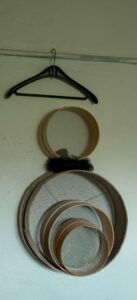
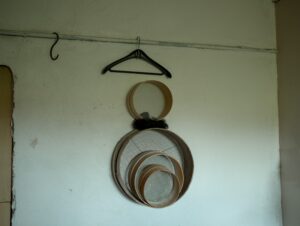
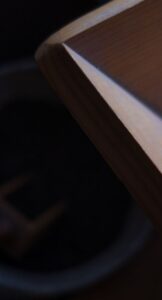
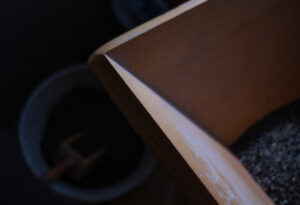
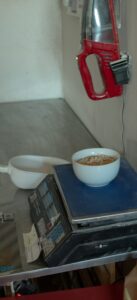

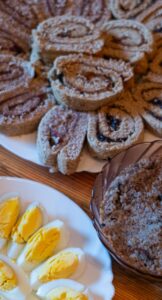

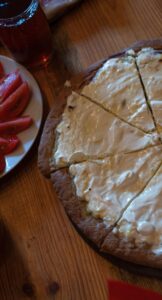

EP.03
From Sunflowers and Pumpkins to Lavender and Moss
Episode 3
Part (2/3)
Buckwheat: The Return of a Traditional Grain
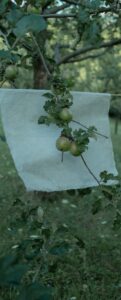
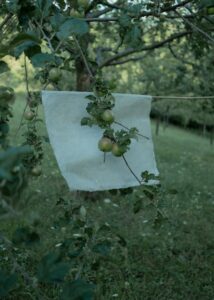
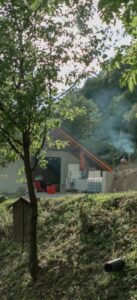


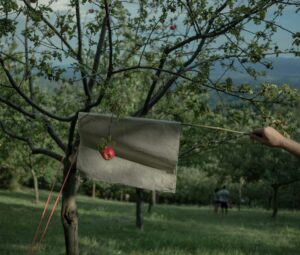


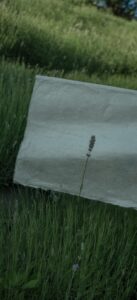
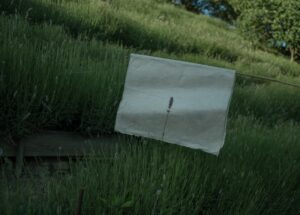


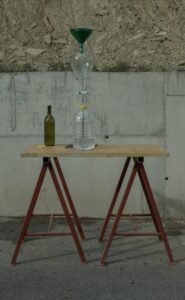
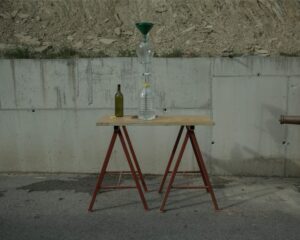
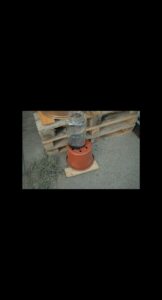

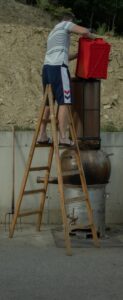
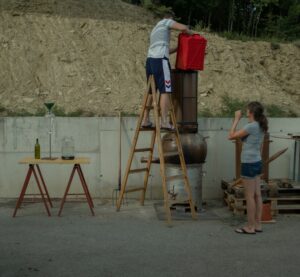



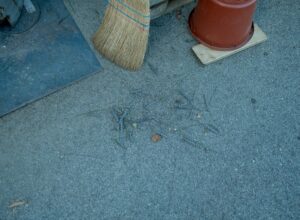
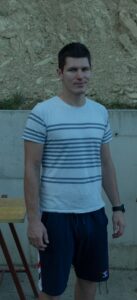
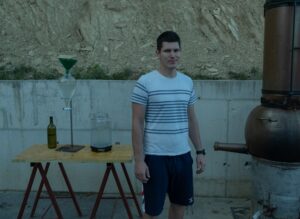

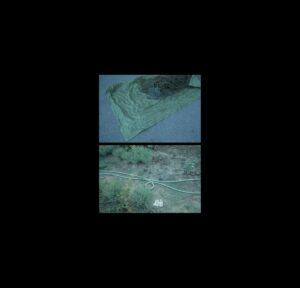
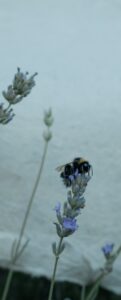

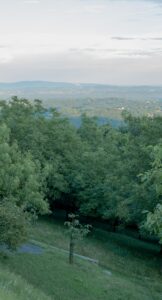

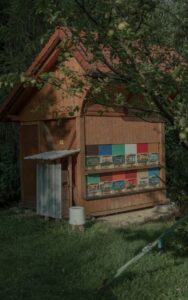
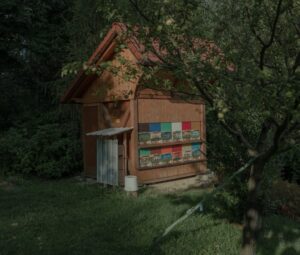
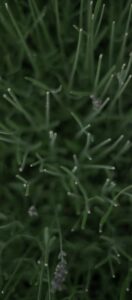

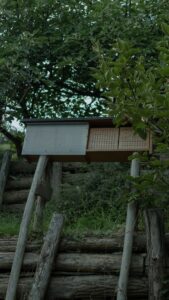

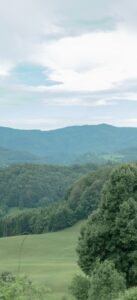
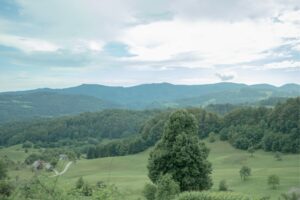
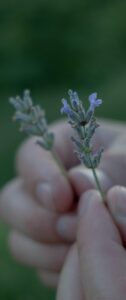

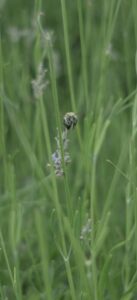
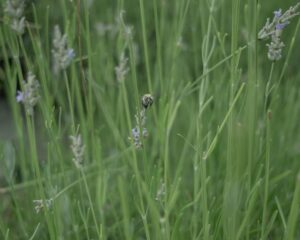

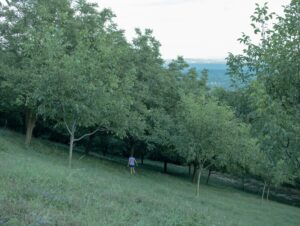
EP.03
From Sunflowers and Pumpkins to Lavender and Moss
Episode 3
Part (3/3)
